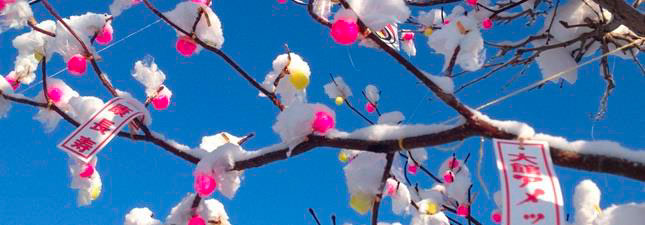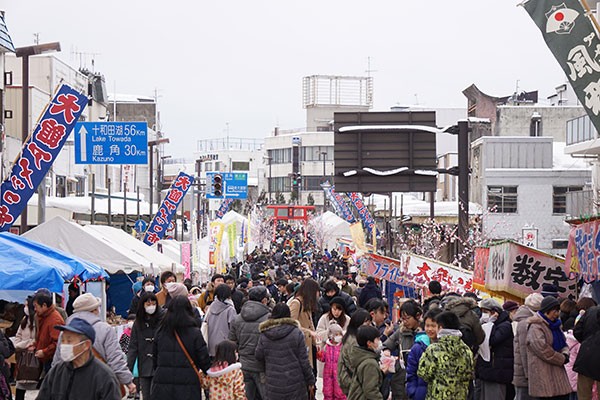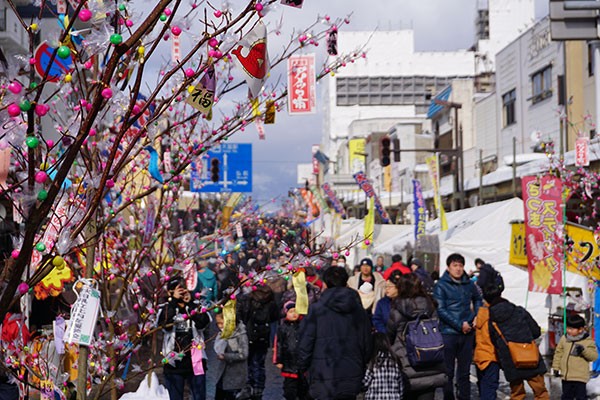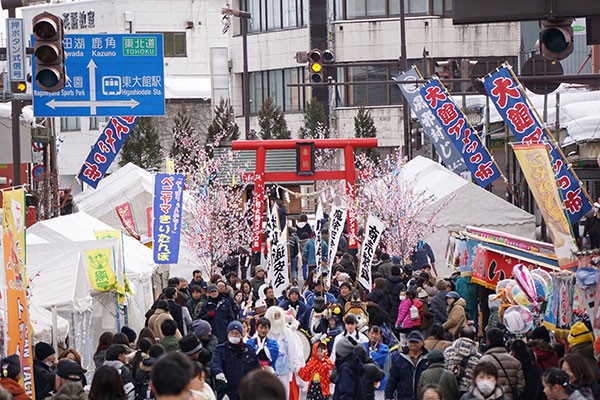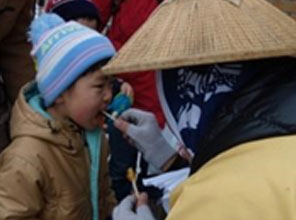Odate Amekko Ichi (Candy Festival)
Odate Amekko Ichi (Candy Festival)
After New Year’s, colorful candies can be found decorating tree branches all around Odate. The bright candies on dogwood branches lining the street draw a beautiful contrast to the pillowy white snow and clear blue skies of Odate winter.
The Odate Candy Festival is held every year on the second Saturday and Sunday of February on the main street. The street is closed to traffic and over 100 candy and food stalls line the streets leading up to a temporary shrine. Legend has is that eating candy from the festival will ward of catching a cold for the rest of winter.
Festival Origins
The festival is said to have started around 400 years ago from a market held near Odate Castle. This was a time of intense battles fought for control over the castle and city.
Eventually Lord Satake gained control of the castle and organized markets around the area. Market days and even what could be sold was determined by the castle lord and the current main street area flourished.
Starting from the early Meiji period, the market days were scheduled so that Odate hosted a market on the 7th, 17th, and 27th of each month.
Early candies were most likely made from rice and wheat easily available to the local farmers. The grains would be dried, fermented, and the resulting syrup used as sweeteners and in medicine. The earliest written record of a candy market in Odate dates back to the Meiji period.
By the early Showa period, professional candy makers began selling modern candies along the street of the Teramachi neighborhood. It’s thought that the modern day festival is a continuation of that tradition.
An article from 1939 contained the following passage regarding Odate: “By the Meiji period, candy making techniques from central Japan had been brought to the area, modernizing the practice. Coloring, animal and fruit shapes, and other techniques helped fuel a boom among women and children.”
At the very least, by the early Meiji period a candy market and festival had been established in Odate. There is an old saying in Odate: “If you don’t eat candy, you’ll turn into a worm.” No one is quite sure of the origins, but the same saying can be found in Iwate Prefecture where another candy market was formerly held.
Festival Symbol: Eda-Ame
According to a book published in 1985, the tradition of tying candies to trees began with attaching mochi rice cakes to branches and presenting them at the family alter.
References to the candy decorated branches first appeared in the local Hokuroku Newspaper in 1951. These branches became popular souvenirs and festival-goers were often seen holding them while walking along the stalls. While any tree branch was used in the beginning, by the 1970’s the dogwood tree became the standard tree for making the decorations.
Amekko-Ichi and Temples
The main street where the candy festival is held was part of the old Ushu-Kaido Route from northern Japan to Tokyo. Running parallel to main street is Temple Street where Rensoji, Joōji, and Gyokurinji temples are located. It is thought that the market located on temple street which often featured candies played a role in the development of the candy festival.
Amekko-Ichi over time
Over the years the location of Amekko-Ichi has changed at least five times since 1949. However, each time the festival was moved to a location near a Buddhist temple. It is thought that Amekko-Ichi owes some of its roots to the small markets once held on temple grounds.
During the scarcity following WWII, candies were considered a luxury item, but local papers record people crowding the street during the festival to buy candy. As confectionary skills increased and candies could be bought at any corner store, the popularity Amekko-Ichi began to fade.
That all changed in 1982 when the festival was moved to main street and the road closed to accommodate foot traffic. Tourists from all over Japan came to enjoy the unique festival and candy. The saying “If you don’t eat candy, you’ll turn into a worm” gradually became “If you eat candy, you won’t catch a cold.”
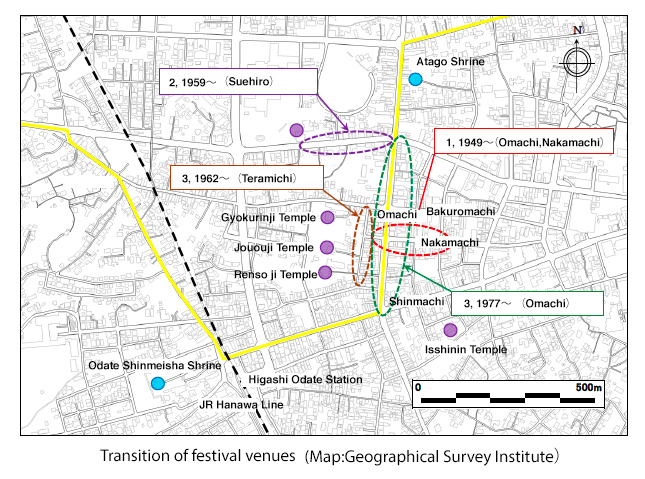
CATEGORIES
